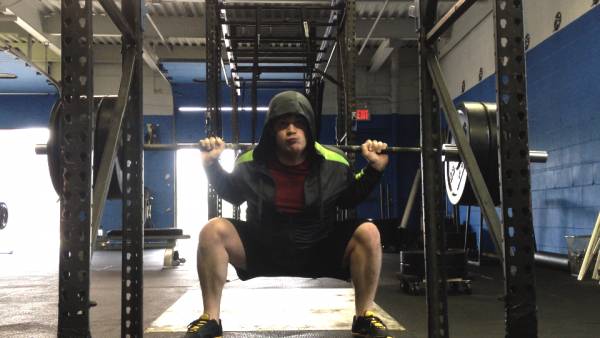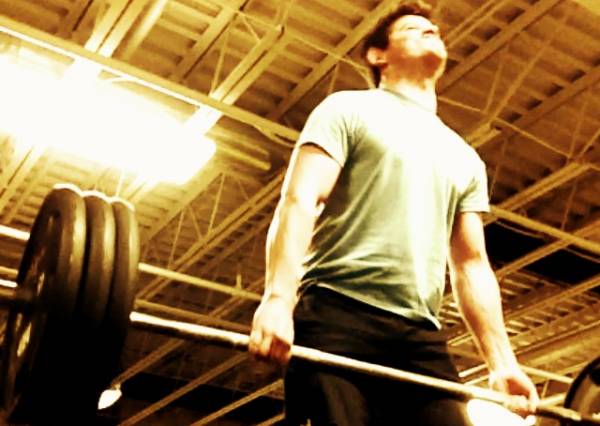I can’t pinpoint exactly when it began. Depression is strange that way.
My family lived in Massachusetts. There were acres of untouched woods behind our house. I loved those woods. They were mine. I would explore them for hours, fighting epic battles against my childhood demons. I didn’t have many friends. I was un-athletic, sickly, and loved to read: a tragic trifecta for an adolescent boy’s popularity.
As much as I loved my woods, at some point they stopped feeling safe. I no longer felt welcome. Imagine waking up every morning and going to Disney World only to one day show up at the gates to the magic kingdom and find the castle had crumbled. Nothing looked or felt the same. It was like I wasn’t playing in my woods anymore. I was playing in its shadow.
Trapped in My Mind
I don’t know when or why it happened because memory has a funny effect on reality. I do remember how I felt. I felt lost and alone. I no longer wanted to fight or quest or even climb a tree. I didn’t want to do anything. I just wanted to sit down and wait for it to all go away, to all go back to the way it was.
“I didn’t even know it was happening until I was trapped in my mind – cold, alone, and waiting for it all to go away.”
My memories of those woods are a painfully accurate metaphor for my depression. I wasn’t popular, but I always had my mind. I was smart. I loved to read and write stories. I did well in school without much effort. It wasn’t being a star athlete or getting Katherine Coyne to like me back, but it was something. Perhaps more importantly it was my something. Then it turned on me. I didn’t even know it was happening until I was trapped in my mind – cold, alone, and waiting for it all to go away.
The Gym Meant Structure and Purpose
When I was in high school I had a friend named Russell. He was an impressive athlete, but also a closet nerd who loved comics and cartoons. We got along well. Taking note of my fascination with the powerfully built figures from my preferred reading material, he started dragging me to the gym. After only a few weeks, I was dragging him.
“I can’t tell you when my depression started, but I can tell you when it was the worst: every period of my life where I wasn’t training.”
The gym became my new battleground. A place dedicated to exorcising my inner demons with cold iron. It gave me structure and purpose. Those workouts formed the foundation of my love for all things strength because that’s what I needed most. I needed to be stronger.
I can’t tell you when my depression started, but I can tell you when it was the worst: every period of my life where I wasn’t training. No exercise meant no exorcism. My demons ran wild.
Stopping Exercise Was Never an Option
My drive to understand movement and injuries was absolutely and entirely selfish at the start. I trained like a fiend and ended up with a vast array of overuse and misuse injuries. My left hip was hobbled from throwing kicks and excessive single-leg squatting with poor mechanics. My right shoulder was just as bad from throwing punches and years of improper pressing.

I love squatting and pressing too
The first time I was completely sidelined by injuries was in my early twenties. My right shoulder had progressed to a point where I could barely raise my arm without shooting pain. I was working at a physical therapy clinic at the time, surrounded by therapists who were supposed to be experts in athletic rehab. But you know what they told me? Stop. I’m injured from “overdoing it” in the gym so I should just stop.
I don’t blame them too much. They didn’t know how these injuries were really affecting me. I put on a great show for everyone, but behind the curtain the lights were starting to dim and the demons were closing in. Stopping exercise was never an option.
Back to the Basics
At this point I’d left weight training behind in favor of all the flashy bullshit that was popular at the time. Refusing to accept “do nothing” as the solution, I went back to the basics. I picked up the weights for the first time since college and after a single session of squats and pulls something crazy happened.
“As it turned out, deadlifts ended up being the solution to most of my problems.”
I worked out on a Friday night (because I’m a cool kid) and Saturday morning my pain had decreased by half. It came screaming back on Monday, but that weekend was a light bulb moment for me. “There’s something to this,” I thought. “Now I need to figure out how to make it stay.”
As it turned out, deadlifts ended up being the solution to most of my problems. The muscles in my mid back were on sabbatical with no plans of returning. The upright posture demands of a deadlift smacked them back into shape. My glutes had taken a similar leave of absence. All of that loaded hip extension put them back on active duty. My functionality was returning. With it came my strength, enough to hold back the horde.
Rebuilding After a Disc Injury
My training “therapy” continued to work well until a little over a year ago. I was in a bad place in a number of ways, but I still had the gym. Unfortunately, my lack of focus on a set of warm-up squats scored me some sweet disc issues. I felt an electric jolt in my lower back and a weird warm feeling. I didn’t walk for two days after that.
Things went bad quickly from there. I couldn’t work. I couldn’t lift. Without those anchors in my life, I went into an emotional free-fall and the horde broke free. I’m lucky to have my family and a wonderful girlfriend who helped push me back toward the gym. I didn’t want the rehab I knew I would get at most physical therapy clinics. I needed to do it my way.

Through all of this the deadlift has been my constant companion.
I imagine you’re curious what fancy approach I took to self-manage a herniated disc. Unfortunately, I’ve got nothing for you. I mobilized gently until I could get into the positions I needed and then I lifted, starting with just the bar. I rebuilt myself by rebuilding my technique and accepting nothing less than perfect on every rep.
It paid off. This past December, a year and a month after my initial injury, I totaled over a thousand pounds on the platform, raw. Just this week I repped out my heaviest squat from that competition seven times and the gain train is showing no signs of stopping.
Deadlifts Can Help You, Too
Through all of this the deadlift has been my constant companion. It’s the training day I look forward to most and, while it should theoretically be the most dangerous lift considering my injuries, that’s precisely why I think it’s so important. People told me I shouldn’t be able to do it. The fact that I can seems to indicate I’m doing something right.
“I’m not telling you this because I enjoy talking about my depression. I’m telling you because I care and because I know what it’s like.”
I love squatting and pressing too, but deadlifts make me feel strong. They make me believe I’m strong and nothing can touch me. Being able to rip 400 pounds off the floor at any given time has done more for my confidence than those woods ever could. The way I see it, deadlifts saved my life.
I’m not telling you this because I enjoy talking about my depression. I’m telling you because I care and because I know what it’s like. I know how it feels to be hurt and angry, afraid you’ll never get back to the things you love.
I tell you so that you know when I say you shouldn’t do something it’s not out of pride or spite – it’s out of love. I was in a dark place that no one should have to go to and if sharing this can help prevent that, then it’s worth it. If you’re there already, then I want you to know you can fight it. You can get better. You can do this.
Oh, and in case you missed it, deadlifts can probably help.
Take a look at these related articles:
- Exercise Is Effective Medicine for Depression/
- Understanding the Brain Is the Key to Being Pain-Free/
- How to Safely Lift When You Have a Bulging Disc/
- What’s New on Breaking Muscle Today
Photo 1 courtesy of Shutterstock.






